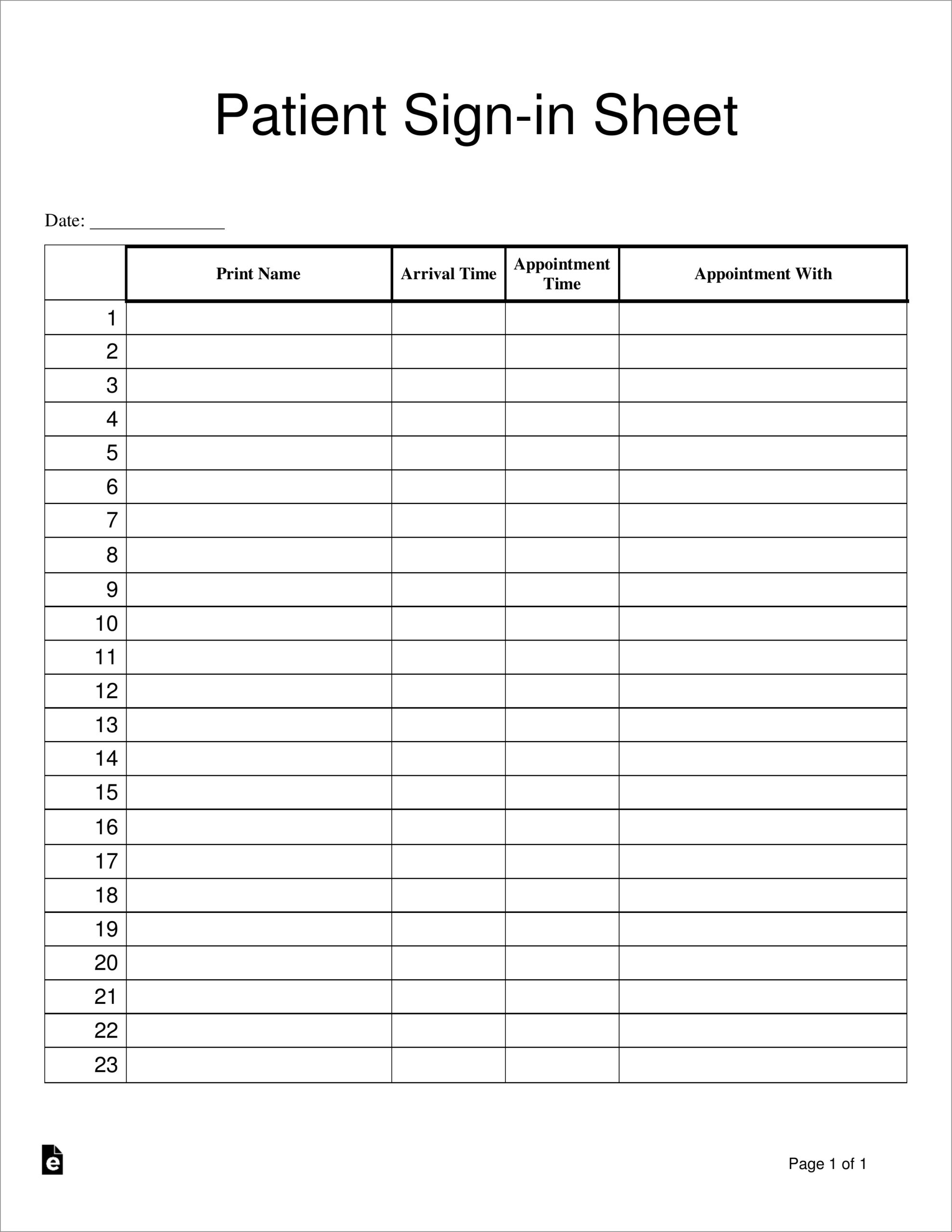When visiting a medical facility, one of the first things patients are often asked to do is sign in. This simple act of signing in may seem routine, but it serves a crucial purpose in maintaining an organized and efficient healthcare environment. The patient sign-in sheet is a document that allows healthcare providers to keep track of patient arrivals, gather important information, and ensure a smooth patient flow.
In this article, we will explore the significance of a patient sign-in sheet and how it benefits both patients and healthcare professionals.
What is a Patient Sign-In Sheet?
A patient sign-in sheet is a document typically found at the reception desk of a medical facility. It is used to record patient arrivals and collect necessary information such as name, contact details, reason for visit, and appointment time. This sheet helps healthcare providers maintain an organized system of patient management and ensures that patients are seen promptly.
Why Should Medical Facilities Use a Patient Sign-In Sheet?
There are several reasons why medical facilities should utilize a patient sign-in sheet:
- Efficiency: Having a sign-in sheet allows healthcare providers to quickly identify patient arrivals and prioritize their appointments accordingly. This helps minimize wait times and ensures that patients are seen promptly.
- Accuracy: By collecting patient information directly from the source, healthcare providers can ensure the accuracy of the data recorded. This is crucial for maintaining up-to-date records and providing appropriate care.
- Emergency Preparedness: In case of emergencies, having a patient sign-in sheet allows healthcare providers to easily identify who is present in the facility. This information can be crucial for timely communication and evacuation if necessary.
- Legal Compliance: In some healthcare settings, it is mandatory to keep track of patient arrivals and maintain a record of their visits. The patient sign-in sheet helps fulfill this requirement and ensures legal compliance.
How Does a Patient Sign-In Sheet Work?
The process of using a patient sign-in sheet is simple yet effective. When patients arrive at the medical facility, they are asked to locate the sign-in sheet and fill out the required information. This can be done manually by writing on a physical sheet or electronically by using digital sign-in systems. Once the information is recorded, healthcare providers can easily refer to the sign-in sheet to determine patient arrivals, appointment times, and other relevant details.
What Information is Typically Collected on a Patient Sign-In Sheet?
A patient sign-in sheet typically collects the following information:
- Name: Patients are asked to provide their full name to ensure accurate identification.
- Contact Details: This includes phone numbers and email addresses, which can be used for communication purposes.
- Reason for Visit: Patients may be asked to briefly describe the reason for their visit, allowing healthcare providers to understand the nature of their appointment.
- Appointment Time: If patients have a scheduled appointment, they are usually required to indicate the time of their appointment.
- Additional Notes: Some sign-in sheets may have a section for patients to provide any additional information or special requests.
Examples of Patient Sign-In Sheets
Here are a few examples of how patient sign-in sheets can be designed:
1. Basic Patient Sign-In Sheet
This type of sign-in sheet includes the essential fields such as name, contact details, reason for visit, and appointment time. It is straightforward to use.
2. Electronic Patient Sign-In System
With advancements in technology, many medical facilities are now adopting electronic patient sign-in systems. These systems allow patients to sign in digitally, minimizing the use of paper and providing a more efficient and eco-friendly solution.
3. COVID-19 Screening Sign-In Sheet
During the COVID-19 pandemic, healthcare facilities implemented additional screening measures to ensure the safety of patients and staff. A COVID-19 screening sign-in sheet may include questions related to symptoms, recent travel, and potential exposure to the virus.
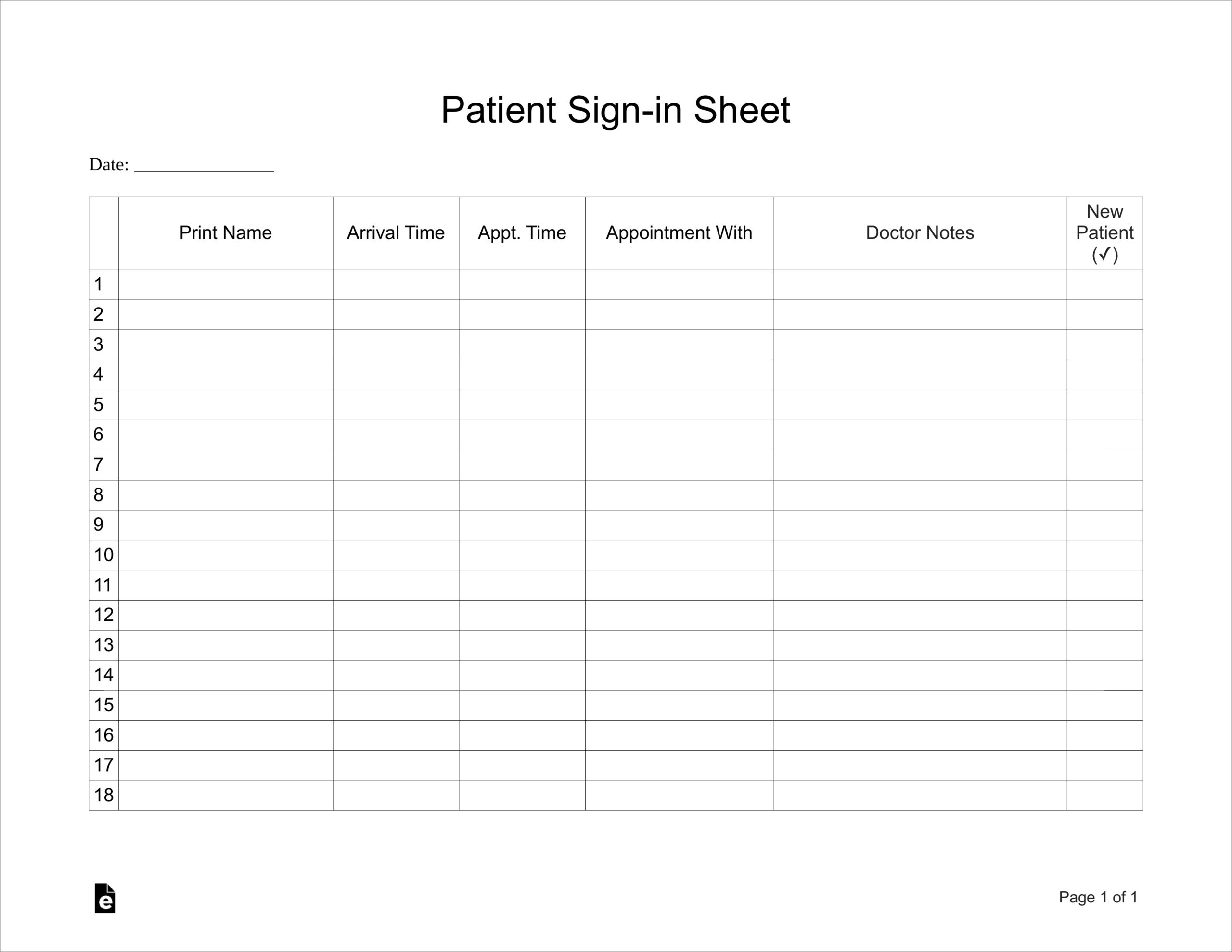
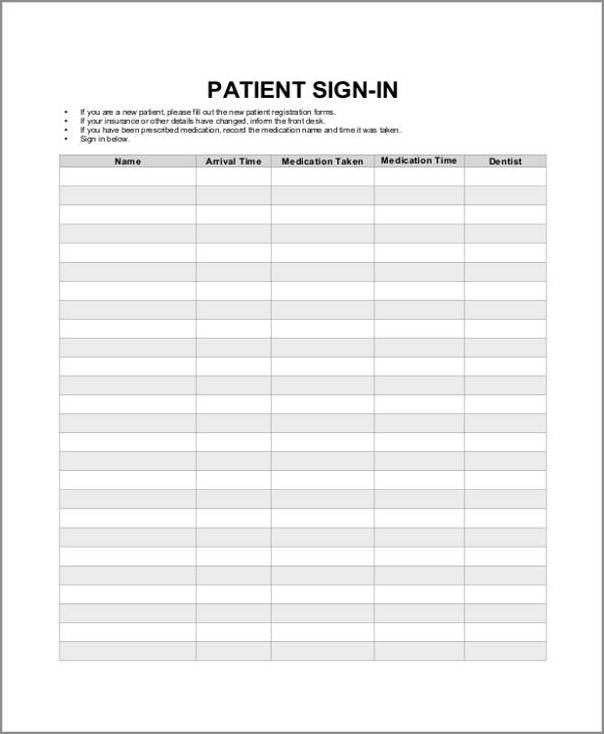
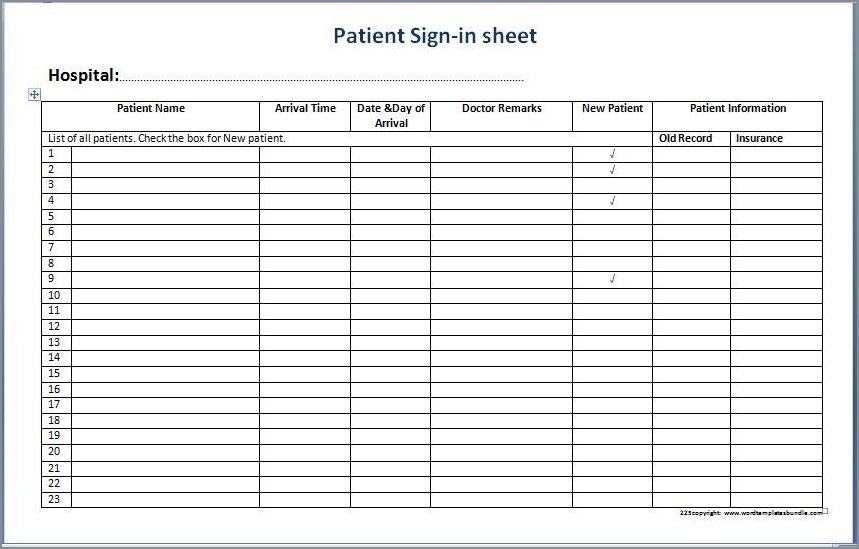
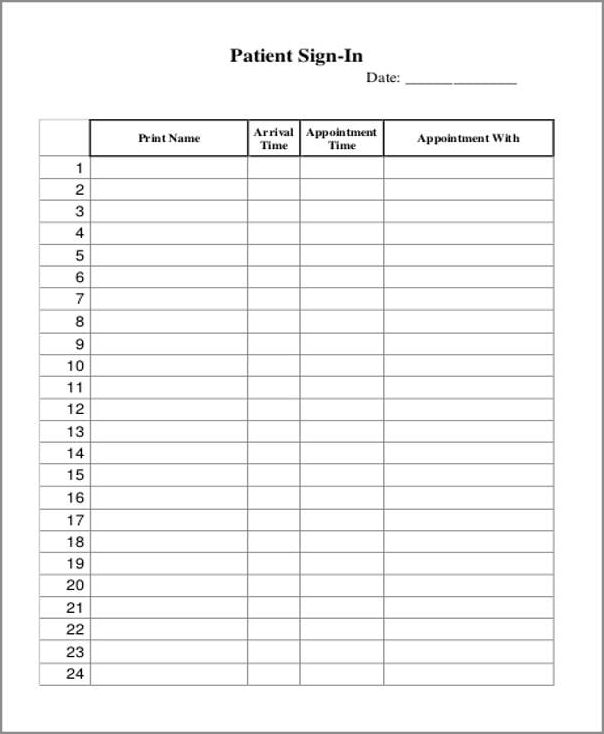
The Benefits of Using a Patient Sign-In Sheet
Using a patient sign-in sheet offers several benefits for both patients and healthcare providers:
- Improved Patient Experience: With a sign-in sheet, patients can easily provide their information and be quickly attended to, resulting in a smoother and more efficient visit.
- Enhanced Organization: Healthcare providers can better manage patient flow and allocate resources effectively when they have a clear overview of arrivals and appointments.
- Accurate Records: By collecting patient information directly, healthcare providers can ensure the accuracy of their records, leading to better continuity of care.
- Time Management: The use of a patient sign-in sheet helps optimize scheduling and reduces wait times, allowing healthcare providers to see more patients within a given timeframe.
- Emergency Preparedness: In case of emergencies or evacuations, having a patient sign-in sheet readily available allows for efficient communication and accounting of patients.
- Legal Compliance: Many healthcare settings require the documentation of patient arrivals and visits for legal and regulatory purposes. A patient sign-in sheet helps meet these requirements.
The Bottom Line
A patient sign-in sheet may seem like a simple piece of paper, but it plays a significant role in ensuring the smooth operation of medical facilities. It helps healthcare providers maintain organization, improve patient experience, and comply with legal requirements. By implementing a patient sign-in sheet, medical facilities can enhance their efficiency and provide better care to their patients.
Patient Sign-in Sheet Template Excel – Download
